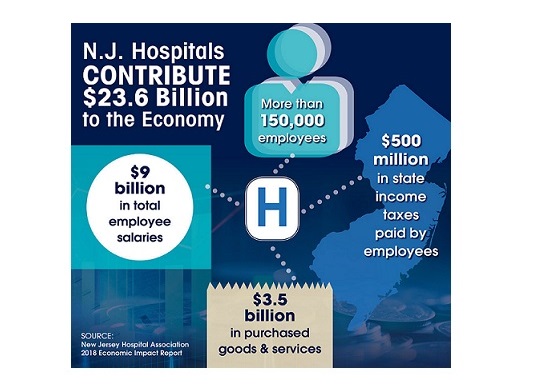BILLERICA, Mass., Dec. 13, 2018 (GLOBE NEWSWIRE) — Conformis, Inc. (NASDAQ:CFMS), a medical technology company that uses its proprietary iFit Image-to-Implant technology platform to develop, manufacture and sell joint replacement implants designed to fit each patient’s unique anatomy, today announced it is implementing steps to improve its overall business model, including the prioritization of certain product development opportunities, cost reduction initiatives with the optimization of sales, marketing and administrative expenses and a reduction of its workforce. In connection with these cost-saving measures, Conformis also announced today the reduction of its debt facility from $30 million to $15 million. Conformis is taking these strategic actions to strengthen its focus on specific areas of opportunity that it believes will enable it to achieve profitability in 2021.
“We are taking decisive actions to prioritize our highest-impact new product opportunities, our Conformis Hip System and our cementless Press Fit total knee, which we believe provide us an opportunity to build a stronger, more sustainable business. As a result of these actions, we believe we can achieve profitability in 2021,” said Mark Augusti, Chief Executive Officer, Conformis. “These actions included the difficult decision to part ways with many valued employees. On behalf of the entire Company, I thank these colleagues for their many contributions to the business.”
The immediate organization-wide actions include:
Expense Management
Conformis is now taking actions to leverage its improvements in gross margin, which began in the third quarter of 2017, by optimizing its overall operating expense structure. As a result, Conformis believes that the actions taken today will lead to a reduction in the use of cash by operating activities from approximately $10 million per quarter during 2018 to less than $4 million per quarter in 2019. These expense reductions are company-wide, impacting sales and marketing, research and development and general and administrative expenses.
New Product Development Opportunities
Conformis plans to continue to execute its new product development programs focusing on the Conformis Hip System, iTotal G3 and cementless Press Fit knee. In the second half of 2019, Conformis expects to achieve full commercial launch of its Conformis Hip System, as well as the limited commercial release of its iTotal G3 total knee. Conformis also remains on track to deliver the limited commercial release of its cementless knee offering in early 2020.
“We recently achieved our 100th total hip arthroplasty case at Conformis and remain very positive about the status and value proposition of our Conformis Hip System. One of our goals when identifying the cost reductions announced today was to insure that they do not affect our previously announced commitment and investment plans for full commercial launch of our Conformis Hip System in the second half of 2019,” said Mark Augusti. “Entering the $7 billion hip arthroplasty market remains a key growth opportunity and a priority for the Company.”
International Expansion
Recognizing demand for its custom orthopedic knee replacement implants outside the United States, Conformis has selectively identified opportunities to expand its distribution in certain international markets. The expansion into other international markets is intended to help offset the sales weakness the Company is experiencing in Germany.
Organizational Transformation
To create a more focused organization and better align internal resources with the Company’s strategic priorities, Conformis reduced its personnel base this week, resulting in a reduction of approximately 10% of its total workforce. As a result of this action, Conformis expects to incur employee severance charges and other exit costs of approximately $700,000 in the fourth quarter and generate annual personnel expense savings in excess of $4 million in 2019.
Debt Reduction and Restructuring
With the reduced need for capital and to create an improved capital structure, Conformis and Oxford Finance LLC have entered into an amendment to their current Loan and Security Agreement. Under the amended agreement, the Company used cash on-hand to pay down $15 million of its $30 million debt facility, and thereby reduced the total debt outstanding to $15 million and the associated interest expense going forward. The amendment also adjusted certain financial covenants.
“We believe this new plan will help right-size the Company, significantly lowering our cash needs,” noted Paul Weiner, Chief Financial Officer. “When combined with the planned continuation of gross margin improvements, we believe we can achieve cash flow breakeven within the next three years.”
2019 Operating Expenses Commentary
The Company expects the following operating expenses for the full year 2019:
- Sales and marketing expense of approximately $32 million. This represents a reduction of approximately $8 million over our estimated 2018 sales and marketing expense.
- Research and development expense of approximately $16 million. This represents a reduction of approximately $1.5 million over our estimated 2018 research and development expense.
- General and administrative expense of approximately $21 million. This represents a reduction of approximately $10 million over our estimated 2018 general and administrative expense.
- Capital expenditure of approximately $3.5 million versus our estimated 2018 $4 million.
- Cash used, excluding financing activities, of less than $16 million versus our estimated 2018 $38 million.
About Conformis, Inc.
Conformis is a medical technology company that uses its proprietary iFit Image-to-Implant technology platform to develop, manufacture and sell joint replacement implants that are individually sized and shaped, or customized, to fit each patient’s unique anatomy. Conformis offers a broad line of customized knee and hip implants and customized pre-sterilized, single-use instruments delivered in a single package to the hospital. In clinical studies, Conformis iTotal CR knee replacement system demonstrated superior clinical outcomes, including better function and greater patient satisfaction, compared to traditional, off-the-shelf implants. Conformis owns or exclusively in-licenses issued patents and pending patent applications that cover customized implants and customized patient-specific instrumentation for all major joints.
For more information, visit www.conformis.com. To receive future releases in e-mail alerts, sign up at http://ir.conformis.com/.
Cautionary Statement Regarding Forward-Looking Statements
Statements in this press release about our future expectations, plans and prospects, including statements about the anticipated timing of our product launches, and our financial position and results, ability to achieve profitability, total revenue, product revenue, gross margin, operations, operating expenses, and financing plans, as well as other statements containing the words “anticipate,” “believe,” “continue,” “could,” “estimate,” “expect,” “intend,” “may,” “might,” “plan,” “potential,” “predict,” “project,” “should,” “target,” “will,” or “would” and similar expressions, constitute forward-looking statements within the meaning of the safe harbor provisions of The Private Securities Litigation Reform Act of 1995. We may not actually achieve the forecasts disclosed in our forward-looking statements, and you should not place undue reliance on our forward-looking statements. Actual financial results could differ materially from the projections disclosed in the forward-looking statements we make as a result of a variety of risks and uncertainties, including whether our cash resources will be sufficient to fund our continuing operations for the periods anticipated; risks related to our estimates and expectations regarding our revenue, gross margin, expenses, revenue growth and other results of operations; risks related to our impact of our reduction in force; risks associated with our ability or inability to satisfy loan covenants; and the other risks and uncertainties described in the “Risk Factors” sections of our public filings with the Securities and Exchange Commission. In addition, the forward-looking statements included in this press release represent our views as of the date hereof. We anticipate that subsequent events and developments may cause our views to change. However, while we may elect to update these forward-looking statements at some point in the future, we specifically disclaim any obligation to do so. These forward-looking statements should not be relied upon as representing our views as of any date subsequent to the date hereof.
CONTACT:
Investor Relations
ir@conformis.com
(781) 374-5598











